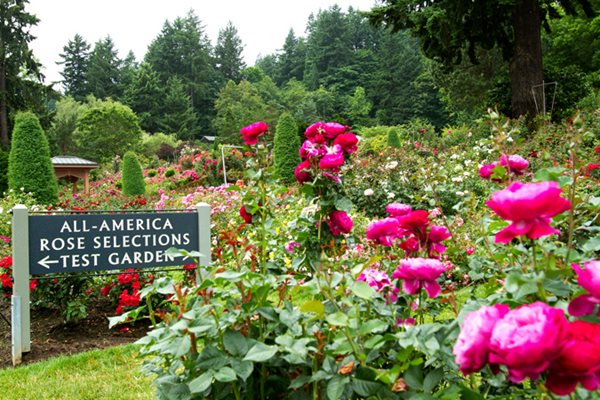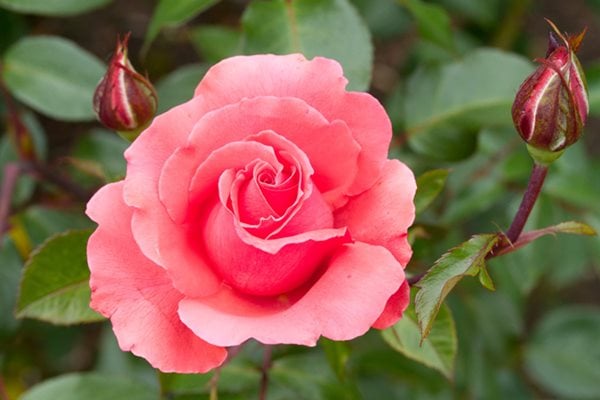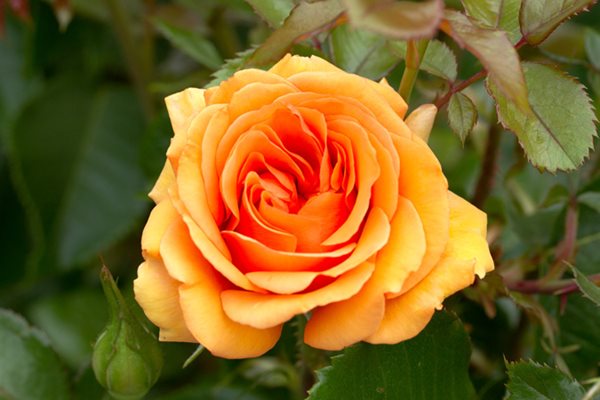![Portland's International Rose Test Garden
Portland Parks & Recreation
Portland, OR]()
Photo by: Anna Laurent
The International Rose Test Garden is the oldest continuously operating public rose test garden in the United States. It was founded in 1917 on the hills of Washington Park in Portland, Oregon.
![Portland's International Rose Test Garden
Garden Design
Calimesa, CA]()
Photo by: Anna Laurent
Over 10,000 individual rose plants of 550 species are terraced over 4.5 acres. The garden slopes towards downtown Portland, offering a view of Mount Hood on clear days.
![Portland's International Rose Test Garden
Garden Design
Calimesa, CA]()
Photo by: Anna Laurent
'Yellow Brick Road,' left, was awarded Portland Best Shrub 2009. It was locally bred in Oregon.
![Portland's International Rose Test Garden
Garden Design
Calimesa, CA]()
Photo by: Anna Laurent
In the early 1900s, Portland was already known as "The City of Roses," thanks to 20 miles of rose-bordered streets (planted for the 1905 Lewis & Clark Exposition) and lots of local rose lovers. The Portland Rose Society was founded in 1889.
![Portland's International Rose Test Garden
Garden Design
Calimesa, CA]()
Photo by: Anna Laurent
The Royal Rosarian Garden was designed to honor a group of "official greeters and goodwill ambassadors for the city of Portland." When a Rosarian is knighted, he or she adopts a namesake rose variety. A plaque embedded in the walkway notes the name of the rose, the name of the Rosarian, and the year. The earliest plaque is dated 1912, for the first Rosarian Prime Minister. A bronze Rosarian statue was unveiled this year, for the Centennial celebration.
![Portland's International Rose Test Garden
Garden Design
Calimesa, CA]()
Photo by: Anna Laurent
In 1912, W.J. Hofmann, the first Rosarian Prime Minister was knighted under the 'Hadley' rose, left. Almost a century later, in 1911, his great grandson was knighted under the same variety.
![Portland's International Rose Test Garden
Garden Design
Calimesa, CA]()
Photo by: Anna Laurent
Adjacent to the garden is a grass-covered amphitheatre that hosts concerts and plays throughout the year. The garden is open morning through dusk. Tours are offered every afternoon in the summer.
![Portland's International Rose Test Garden
Garden Design
Calimesa, CA]()
Photo by: Anna Laurent
'Cinco de Mayo,' left, was a 2009 All-American Rose Selections (AARS) Winner.
![Portland's International Rose Test Garden
Garden Design
Calimesa, CA]()
Photo by: Anna Laurent
Many of the garden's first roses were refugees—breeders in Europe worried that their hybrids wouldn't survive World War II, and they sought safe ground for their roses elsewhere. Portland's Rose Society volunteered their garden, and they soon received rootstocks of many European hybrids.
'Betty Boop' roses, left, recipient of the 2001 Portland Gold Medal.
![Portland's International Rose Test Garden
Garden Design
Calimesa, CA]()
Photo by: Anna Laurent
The 'Mardi Gras,' left, won Best Floribunda Rose 2012.
![Portland's International Rose Test Garden
Garden Design
Calimesa, CA]()
Photo by: Anna Laurent
When patent protection in the US was extended to include plants, suddenly every rose breeder was clamoring for licenses. In 1938, breeders and rosarians established the All-American Rose Selections (AARS) to evaluate new varieties that flooded the rose market. AARS began testing in Portland in 1940.
![Portland's International Rose Test Garden
Garden Design
Calimesa, CA]()
Photo by: Anna Laurent
'Catalina' grandiflora, left.
![Portland's International Rose Test Garden
Garden Design
Calimesa, CA]()
Photo by: Anna Laurent
Winged thorn rose (Rosa sericea), left.
![Portland's International Rose Test Garden
Garden Design
Calimesa, CA]()
Photo by: Anna Laurent
The 'Vision' rose, left.
![Portland's International Rose Test Garden
Garden Design
Calimesa, CA]()
Photo by: Anna Laurent
At the far end of the garden is the Queens Walk, where Rose Festival queens are honored with a bronze star. Since 1930, the city has selected their queen—a high school girl—at Portland's annual Rose Parade.
![Portland's International Rose Test Garden
Garden Design
Calimesa, CA]()
Photo by: Anna Laurent
'Sweetness' floribunda, left, won Most Fragrant Rose in 2010 Portland's Best Rose Contest.
![Portland's International Rose Test Garden
Garden Design
Calimesa, CA]()
Photo by: Anna Laurent
Landscaped within a ring of evergreens, the garden's atmosphere is distinctly Pacific Northwest. Portland summers are filled with flowers, but none better personify the city than the pairing of roses and Douglas firs.
![Portland's International Rose Test Garden
Garden Design
Calimesa, CA]()
Photo by: Anna Laurent
The garden is one of six testing grounds for the American Rose Society miniature rose test program. National annual winners are displayed in a center aisle.
![Portland's International Rose Test Garden
Garden Design
Calimesa, CA]()
Photo by: Anna Laurent
'Etoile de Feul,' left, was introduced by French breeder Joseph Pernet-Ducher in 1921, and added to the Royal Rosarian Garden the following year.
![Portland's International Rose Test Garden
Garden Design
Calimesa, CA]()
Photo by: Anna Laurent
The Gold Medal Garden is landscaped with a fountain, gazebo, walkways, and beds of Gold Medal roses— those honored by the Portland Rose Society. Gold Medals are awarded annually to that year's best introduction to the test garden. The first was named in 1919.
![Portland's International Rose Test Garden
Garden Design
Calimesa, CA]()
Photo by: Anna Laurent
'Purple Heart' grandiflora, left.
![Portland's International Rose Test Garden
Garden Design
Calimesa, CA]()
Photo by: Anna Laurent
Portland's garden is one of 24 official AARS testing sites, where new roses are evaluated in a variety of criteria over two years. Roses that thrive in the various test zones are given the AARS seal of approval.
![Portland's International Rose Test Garden
Garden Design
Calimesa, CA]()
Photo by: Anna Laurent
'Peace' hybrid tea, left.



























